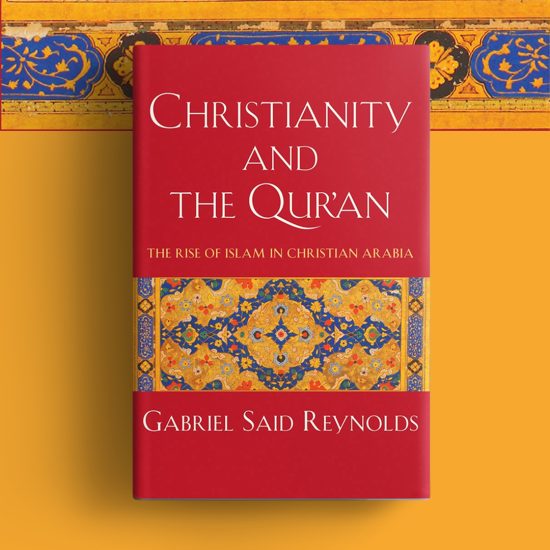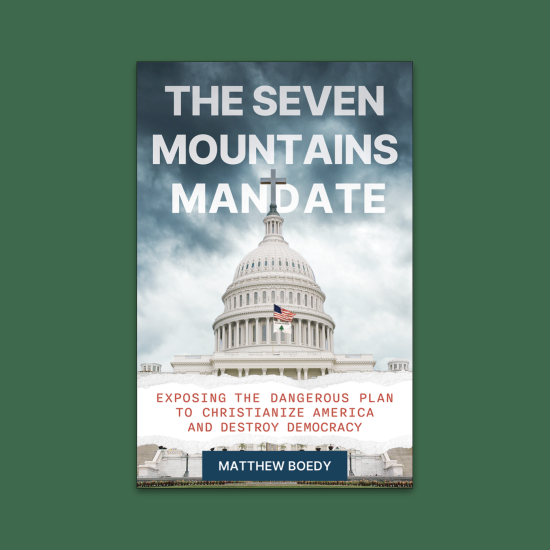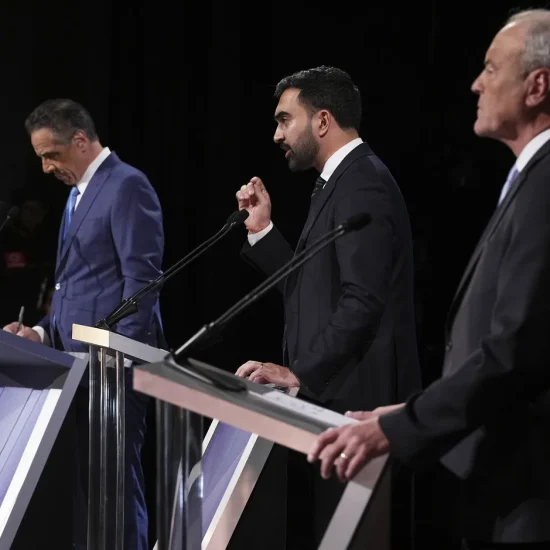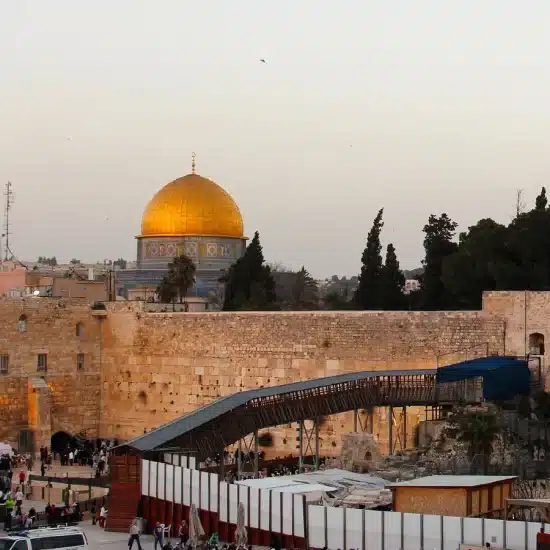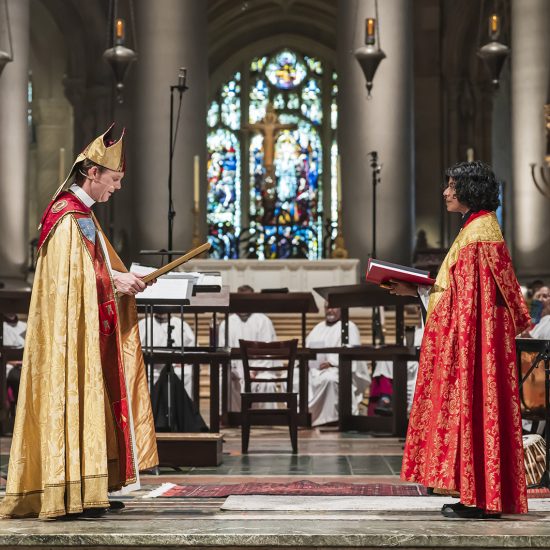

PLURALISM IN PRACTICE: Case Studies of Leadership in a Religiously Diverse America. Edited and written by Elinor J. Pierce. Afterword by Diana L. Eck. Maryknoll, NY: Orbis Books, 2023. Xix + 244 pages.
Whether some in our midst are willing to admit it or not, the United States is religiously diverse. Christianity may remain the largest religious group in the United States, but even Christianity itself is diverse. In my immediate neighborhood, there is a Roman Catholic Church, a Romanian Pentecostal Church, a Serbian Orthodox Church, and two evangelical churches, one of which offers services for several ethnic/language groups. Not far away are Chaldean, Syrian Orthodox, Coptic, a Korean United Methodist Church, a mosque, a synagogue, and a large Hindu Temple. That’s just a few of the possibilities that lie within my city. As you can see, here in my community the diversity runs far beyond traditional Protestant, Catholic, and Jewish. That makes some people rather nervous. My community is rather diverse, but we’re not unique. This diversity provides both challenges and opportunities for our communities. If our nation is increasingly pluralistic, how do we put this into practice?

Robert D. Cornwall
Elinor Pierce, who is the research director and lead case writer for Harvard University’s Pluralism Project, has gathered together case studies that describe for us some of the ways in which pluralism exists and is practiced in the United States. The result of her work is titled Pluralism in Practice: Case Studies of Leadership in a Religiously Diverse America. The Pluralism Project is an effort that is housed at Harvard and is directed by Diana Eck.
Pluralism in Practice offers the reader case studies that retell the stories of the ways religious diversity works in America. Many of these cases focus on how faith communities have encountered and overcome resistance, often by Christian groups who fear their presence in their communities. While the case studies remind us of the many challenges faced by faith communities, especially those who do not represent the majority faith, they also offer words of hope. In a brief foreword to the book, Diana Eck defines pluralism for us. According to Eck, “Pluralism is not diversity alone, but the energetic engagement with diversity” (p. vii). Religious diversity is a given. It’s here among us. It might be more present in my community, which has a large foreign-born population, many of whom come from Asia, than in some others, such as the community where I grew up, the diversity is present. As for pluralism, as defined by Eck, that is not a given. Rather, as Eck suggests, “it is an achievement” (p. vii). When it comes to diversity, tolerance might be a starting point, but it isn’t enough. Tolerance doesn’t require much from us, and it leaves in place stereotypes, half-truths, and fear that can lead to division and even violence. Embracing pluralism involves actively seeking “understanding across lines of difference” (p. vii). That isn’t easy because it requires much from us. What we need to move toward embracing pluralism are resources, such as the case studies found in Pierce’s Pluralism in Practice, which is designed to help us move across those lines of difference toward greater understanding.
All but one of the case studies included in Pluralism in Practice are based on extensive research and interviews. Only the “Fliers at the Peace Parade” case study is based on secondary sources. They are designed to lead us toward a decision in favor of embracing pluralism. The goal here is action on the part of the reader and not mere abstract reflection. With this in mind, each of the case studies is divided into two parts. Part A introduces the problem, person, and place that defines the case. Following the presentation of the case, we pause for a set of questions that help us reflect on the case. Then Part B offers a discussion of how the case was resolved. Finally, the writers provide a postscript or update so we can see how things developed. Again, the goal is to inspire us to engage the religious diversity present in our community, especially through interfaith dialogue. The cases discussed in the book emerged over fifteen years, running from the late 1990s up until 2022. Unfortunately, Pierce points out that the postscript reveals a darker context, where a polarized political and media landscape has raised concerns about the future of democracy in America, along with the rising tide of hate crimes “against communities minoritized by race and religion.” In other words, there is still much work to be done. That has become abundantly clear as war in the Middle East is again with us, leading both to anti-Semitic attacks and increased Islamophobia.
Among the organizations discussed in Pluralism in Practice is one that I once helped lead, even if I wasn’t involved in its founding or the events leading up to its founding. That case study involves a response by parts of the faith community where I have lived and served over the past fifteen years to an act of exclusion related to a local observance of the National Day of Prayer. The central figure in that case is a close friend. So, I am as the reviewer of this book an engaged participant in the practice of pluralism and I do so as an ordained minister who is fully committed to my Christian faith.
When it comes to the case studies, Pierce has divided them into six parts, each having two individual cases. Part 1 is titled “Constructing Religious Diversity.” The two cases discussed in this section focus on a crisis over the presence of Christmas trees at Sea-Tac Airport (Seattle/Tacoma). This first case involved a traditional practice of putting up Christmas trees in the airport terminal, a practice that was challenged by a Jewish group that wanted to add a Menorah, which led to the removal of the trees, followed by an outcry, and ultimately a solution that might not be perfect, but moved things forward. The second case involved a festival of religious faiths developed by Brad Braxton, then with the Smithsonian, that was to take place on the National Mall in 2023. The goal was to highlight the diverse religious traditions in the nation. The outcome here was largely positive.
Part 2 is titled “Religion in the American City.” The first of the two cases is titled “Trouble in Troy.” This case involves the experiences of a Hindu woman, my friend Padma Kuppa, who sought to participate in a National Day of Prayer event hosted each year at city hall. Though she had the support of the mayor, the planning team opposed her inclusion, arguing that it was a Christian event. As a result, the City Council rebuffed her request. When some other members of the local faith community heard about her experience, they rallied around her and planned a separate event. Ultimately that event led to the founding of the Troy Interfaith Group. Three years after its founding, I moved to Troy and joined the group, eventually serving in leadership for a time. Interestingly, some years later, Padma Kuppa, the main protagonist in the story, would get elected to the Michigan House of Representatives, representing the community that once rejected her participation in a National Day of Prayer event. As you can imagine, this case is close to my heart. The second case in this section is titled “A Call to Prayer.” It recounts the efforts by the local Muslim community in Hamtramck, Michigan, a city near Troy, which was once a predominantly Polish community but now has a Muslim plurality, with large Bangladeshi, Bosnian, and Yemeni populations. The question here deals with the request of a local mosque to broadcast the Islamic call to prayer, which takes place five times a day. They based their request on the presence of bells rung through the day at a Roman Catholic Church across the street. That was resolved amicably, but it wasn’t the only issue arising in the community. Later a question was raised about the presence of a pride flag at city hall, which was opposed by the same community that sought to gain permission for the call to prayer. The situation in Hamtramck illustrates the complexity of diversity and pluralism.
In Part 3, titled “Fault Lines in Interfaith Relations,” we read first a case about tension present in a small city in Massachusetts when a synagogue was to host an interfaith event. The problem was that the synagogue had posted a sign that declared “We Support Israel.” The question was whether this sign might offend Muslims in the community as they attended the event and whether it should be removed before the event. The youth leading the event believed the sign would prove to be a problem. The questions raised by the youth led to a fruitful conversation about the Israeli-Palestinian issue. As they pondered the question, they were able to offer an interfaith iftar meal that got conversations going. The second case study involved “Fliers at a Peace Parade.” This case study, which is the only one based solely on secondary sources, involved fliers passed out by a fundamentalist Christian pastor at a parade sponsored by the local Sikh community that took place in the Central Valley of California. Here the question has to do with the challenge of proselytism, especially in contexts like a celebration planned and carried out by a minority faith community. The message here is that interfaith work should not involve proselytism.
Part 4 deals with what has become a regular point of contention across the country—the building of mosques in our communities. Part 4 is titled “Mosques in the American Landscape.” It offers us two cases dealing with resistance that emerged in two communities where the construction of mosques was proposed. The first case study explores the debates over the permitting of a mosque in a small Illinois town. The second case study deals with the efforts to build the Islamic Center after 9-11 near the site of the Twin Towers attacks. While in the former case, the mosque was built though it took a lot of courage by the mayor and involved attempts to bring clergy into the conversation to help answer questions, the second mosque in New York was never built. What is important in these two cases is that they illustrate what has become a regular point of resistance to religious diversity taking place across the country.
Part 5 is titled “Interfaith and Multifaith Challenges.” The two cases in this section take us in a different direction from many of the earlier ones, which involved dealing with community resistance to diversity. Here it is a more internal conversation. The first case study involves the question taken up by a synagogue as to whether a woman who was born to a Jewish family but was now a Buddhist leader could become a member of a local synagogue. The question is what it might mean to be both Jewish and Buddhist. In part, the question of membership had to do with the possibility of the woman’s son receiving his bar mitzvah. The issue wasn’t the bar mitzvah but the question of being members of two religious communities. The second case involved an invitation to the synagogue after the Tree of Life shootings in Pittsburg for an interfaith service. The question here had to do with whether that was the time to open the synagogue to the larger community. Despite concerns, a particular synagogue offered an interfaith service that was well received.
The final set of cases is discussed in Part 6 under the title: “Navigating Crisis and Change.” The first case, titled “A Quandary in Queens,” involved a case of Hindus leaving offerings in the waters and beaches at Jamaica Bay in Queens. The question here involved ecology, what makes for trash, and religious rights and freedoms. We learn that the Hindu community was divided over the issue of whether they should cease to leave their offerings, which were washing up on beaches. As a response, discussions took place as to what eco-friendly practices might look like. The final case titled “Forty-Nine Days” involved the situation faced by Asian American Communities after the COVID-19 lockdowns and the emergence of anti-Asian sentiment and activities, which included attacks on Buddhist temples. How might these be addressed effectively and appropriately?
Each of the case studies discussed above offers readers opportunities to have deep and meaningful discussions dealing with increasing our ability to embrace (or not) the religious diversity present in the United States. Do we resist it? Tolerate it? Or engage it? As you might imagine the people involved in the Pluralism Project recommend the third approach, engagement. It’s a position I would embrace as well. The hope here is that the case studies offered in Pluralism in Practice will serve as a foundation in efforts to develop informed interfaith leaders who will actively pursue the kind of pluralism suggested by the authors. Even as Diana Eck defined pluralism in her foreword, she offers an afterword to the book titled “A Pedagogy of Pluralism.” In this afterword, Eck offers her reflections on the cases and their usefulness in teaching interfaith dialogue to embrace pluralism. That is a major purpose of this book—teaching religious leaders who will pursue religious pluralism.
Elinor Pierce’s Pluralism in Practice is an important contribution to the development of leaders who engage in interfaith work. This is work that is increasingly important as the nation grows more diverse. There are strong currents of resistance to this diversity on the part of people who fear being overwhelmed by this diversity. There is a fear running through the nation that the cultural foundations of the nation are in jeopardy, those cultural foundations are said to be Christian. While there is this resistance rooted in fear, for those of us who have been engaged in this work for any amount of time, we have discovered that our lives and our faith experiences have been enriched. It is my belief, as one who has been involved in this work for many years, that Pluralism in Practice will prove extremely helpful as we navigate what has become choppy waters, where arguments for religious liberty and freedom have become in many cases self-serving and exclude the beliefs and practices of others. May we choose a different path, one that embraces pluralism rather than resisting it.
This review originally appeared on BobCornwall.com.
Robert D. Cornwall is an ordained minister in the Christian Church (Disciples of Christ). Now retired from his ministry at Central Woodward Christian Church (Disciples of Christ) of Troy, Michigan, he serves as Minister-at-Large in Troy. He holds a Ph.D. in Historical Theology from Fuller Theological Seminary and is the author of numerous books including his latest “Second Thoughts about the Second Coming: Understanding the End Times, Our Future, and Christian Hope” coauthored with Ronald J. Allen. His blog Ponderings on a Faith Journey can be found at www.bobcornwall.com.


